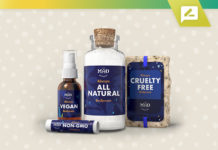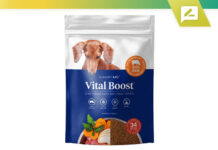In parts one and two of Health and Fitness Beyond 40, we explored the various biological processes that are involved in the creation of muscle mass, as well as providing information on the best exercise programs for your body type. Understanding the changes that occur in the body due to physical exercise can help fitness enthusiasts of any age reach their goals faster.
In this article, we’ll explore the various dietary supplements that can provide a natural boost to the weight loss and muscle gaining process, examining their various effects and providing guidance on how to leverage these potent nutritional aids to get the most out of your workouts.
Dietary supplements can provide a wide range of nutritional elements that are either hard to gain from normal food, or cannot be synthesized inside the body. Many of these supplements are extremely effective in promoting higher levels of fitness.
While there are many different sports supplements available on the market today, from powerful pharmaceutical compounds to herbal extracts, in this article we’ll focus only on healthy, natural supplements that have been scientifically proven to be effective in clinical trials.
The supplements we’ll be taking a look at today are vitamin supplements, amino acids, BCAA’s, glutamine, and creatine monohydrate.
Vitamins & Minerals
Vitamins play an important role in the dietary intake of everybody, from professional athletes to pregnant mothers and young children.
Defined as organic compounds that are essential for growth, good health and nutrition, vitamins are nutritional elements that are typically only required in small amounts and cannot be synthesized by the body, available only through dietary intake.
Minerals play a similar role, providing the body with the raw ingredients it needs to repair and maintain the nervous system, brain function, and other critical body functions. Some of the most essential vitamins that should be taken on a regular basis are vitamins A, D, E, K and C, as well as vitamins B6 and B12.
Similarly, essential minerals such as calcium, magnesium, potassium, boron, selenium, zinc, iron, chromium, and manganese should be a part of any nutritionally balanced diet. A healthy dietary intake consisting of balanced food groups should provide most of this nutritional content, but it’s a good idea to support your vitamin and mineral intake by taking a daily multivitamin and mineral supplement.
Contents
Fitness Supplements
While basic micronutrient intake is important, there is also another class of dietary supplements that, while not essential for good health, can dramatically increase the rate at which the body can build new muscle mass, burn fat, and increase endurance and physical output.
Supplementing your diet with fitness supplements can offer a significant advantage to any fitness enthusiast, helping users achieve fitness goals faster.
Muscle growth and weight loss, as detailed in part two of our Health & Fitness Beyond 40 Guide, is a constant, cyclical process of damage, repair, recovery and growth.
A body that is constantly repairing and growing can benefit from an added nutritional boost, which can be gained effectively from a number of safe, healthy, scientifically-proven sources. Let’s take a look at the four most effective kinds of fitness supplements:
Amino Acids
Amino acids are simple organic compounds that the body uses for various bodily functions. These organic compounds can be described simply as small components of protein.
There are 28 amino acids in total, nine of which are classified as “essential” amino acids, which means like vitamins they cannot be manufactured by the body and can only be sourced from dietary intake.
The essential amino acids are:
- Isoleucine
- Lysine
- Leucine
- Histidine
- Methionine
- Phenylalanine
- Threonine
- Tryptophan
- Valine
The other 19 amino acids are classified as “non-essential” amino acids, meaning they can be synthesized within the body from other elements.
This doesn’t mean it’s not worthwhile adding non-essential amino acids to your dietary intake- on the contrary, some non-essential amino acids have powerful applications for enhancing physical performance.
Both non-essential and essential amino acids can be broken down from protein by the digestive system or taken in a purer form as a dietary supplement.
Amino Acid Fitness Supplements
There are a number of amino acids that possess properties that make them highly effective fitness supplements. Arginine is arguably one of the most effective non-essential amino acids used as a fitness supplement.
Arginine is commonly available in L-arginine form as a powdered supplement. When ingested, the body converts l-arginine into nitric oxide. Nitric oxide is a powerful vasodilator, meaning it causes the blood vessels of the body, such as the veins, arteries and capillaries, to dilate, or relax and expand.
This allows the heart to pump more blood to the muscles at a higher rate, resulting in more oxygen reaching muscles that are performing exercises such as strength training or cardio.
The vasodilatory effect of l-arginine also causes a larger, longer “pump”, causing muscles to appear larger and boosting overall athletic endurance. By promoting higher blood flow to muscle tissue, arginine also boosts the rate at which the body can heal damaged muscle tissue, promoting faster hypertrophy and muscle cell generation.
Amino acids, whether essential or non-essential, are powerful tools for fitness enthusiasts of any level. Supplementing your diet with vitamin B6 and vitamin C can also boost amino acid metabolism, increasing the efficiency with which the body can utilize these compounds. If you’re supplementing your diet with amino acids, be sure to take a daily supplement that contains these vitamins.
BCAA’s
BCAA is an acronym for branched chain amino acids. BCAA’s are part of the 28 total amino acids listed in section one of this guide, but have a decidedly different application when used as a fitness supplement. There are just three BCAA’s- Leucine, Isoleucine and Valine. These three amino acids differ from the other 25 amino acids because their molecular structure is branched.
These three amino acids are a highly popular workout supplement due to their ability to promote faster and more efficient protein synthesis, which aids muscle development. The protein synthesis enhancing properties of BCAA’s provide an effective solution to the problem of catabolism.
When you perform either cardio or weight training exercises, the body harvests energy from both dietary intake and from stored energy in the form of fat deposits, which is great for burning fat, but also from muscle, which is not so great for building mass.
The energy harvested from muscle mass is broken down into muscle amino acids to power the muscles in lieu of dietary intake. This process, called catabolism, also slows down the rate of protein synthesis, decelerating muscle gain.
The basic equation for this relationship is described as muscle mass = rate of protein synthesis – rate of protein breakdown. This means that if the rate of muscle synthesis is equal to or less than the rate of protein breakdown, muscle growth will stagnate, or actually cause an individual to lose muscle mass.
The effects of age on the metabolism can exacerbate this problem, slowing the conversion of food to energy and increasing the rate of protein breakdown.
How Do BCAA’s Boost Muscle Growth?
BCAA’s help to minimize catabolism by increasing the rate of protein synthesis, compensating for the higher rates of protein breakdown caused by metabolic slowdown. In addition to boosting the rate at which the body can synthesize protein, BCAA’s also increase the capacity of the body to synthesize protein by promoting the synthesis of the cellular machinery that is responsible for protein synthesis.
BCAA’s can actually reduce the rate at which protein breakdown occurs. By interacting with and inhibiting the protein breakdown pathways in the body, BCAA’s are able to slow protein breakdown.
Interestingly, BCAA’s are also able to reduce the amount of messenger RNA that conveys genetic information from DNA to the ribosome inside the cells of the body, which are responsible for protein synthesis.
Messenger RNA, or mRNA, specifies the amino acid sequence of the protein products of gene expression, so by reducing the total amount of mRNA, BCAA’s effectively minimize catabolism by balancing the catabolism equation.
Isoleucine, the first of the three BCAA’s, is also critical in the formation of hemoglobin, a protein responsible for transporting oxygen to musculature. This increases cardiovascular performance through a mechanism that offers similar benefits to arginine, described in section one of this guide.
Leucine, the second BCAA, promotes faster wound recovery, while Valine acts in a complementary manner to nitrogen, boosting performance.
There is even evidence that demonstrates interaction between BCAA’s and the serotonin pathways of the brain. During intense physical exercise, the brain converts an amino acid called tryptophan into serotonin. High serotonin levels increase the perception of fatigue, causing demotivation and a lack of focus during workouts.
BCAA’s have been shown to compete with tryptophan for entry into the brain, reducing the total amount of tryptophan that crosses the blood/brain barrier, therefore decreasing serotonin levels and allowing BCAA users to work out harder, for a longer time.
Overall, BCAA’s are a highly effective supplement for fitness enthusiasts beyond the age of 40, balancing protein synthesis rates and speeding up muscle growth. The best way to incorporate BCAA’s into your diet is by taking a BCAA supplement that contains a 2:1:1 ratio.
BCAA ratio describes the balance of individual branched chain amino acids in the formula, so a 2:1:1 ratio BCAA supplement would contain two parts of leucine to every one part isoleucine and valine, respectively.
Glutamine
Glutamine is another amino acid, but like BCAA’s, deserves a separate section in this guide.
The most common amino acid in the body, glutamine is classified as “semi-essential”, meaning that under ideal conditions the body is able to synthesize it autonomously, but is more effective when harvested from dietary intake. Similarly to BCAA’s, glutamine is able to reduce catabolism, but is also able to promote anabolism, or muscle growth.
Other benefits of glutamine include higher immune system function and enhanced glycogen storage, as well as an ability to promote higher human growth hormone production.
As the most common amino acid, glutamine accounts for over 60% of the free intracellular amino acid pool, which is the total amount of amino acids available in the body at any given time, based on dietary intake.
Glucosamine has become a popular fitness supplement in recent years due to new scientific insight regarding its interactions with the protein synthesis mechanisms of the body and it’s demonstrated positive effect on muscle growth.
Hows Does Glutamine Promote Muscle Growth?
Intensive physical exercise causes metabolic stress on the body, as the restorative process of the body requires a large amount of energy to heal muscle damage. The body uses a large amount of glutamine to bolster the immune system, distribute ammonia, and provide energy to lymphocytes and macrophages.
Glutamine is typically stored within muscle tissue, and during catabolism, the glutamine stores of the body can drop significantly. It is the first amino acid the body uses in an attempt to correct catabolism when it occurs. During catabolism, the body uses glutamine to deliver protein to the muscle cell, where it is used to foster growth.
Glutamine supplementation also helps to promote nitrogen retention in muscle cells. Nitrogen retention helps to maintain the nitrogen balance of the body, which is considered as the key to efficient muscle growth.
Glutamine can also promote better digestive function, as it is used as fuel by the cells that line the intestinal tract, and can also pass through the blood/brain barrier, functioning as fuel for cognitive processes and enhancing focus. Glutamine protects the body from the effects of ammonia toxicity and has been clinically proven to elevate human growth hormone levels.
As outlined in section two of the Health & Fitness Beyond 40 guide, increased levels of human growth hormone, or HGH, can promote rapid muscle gain.
Research released by the American Journal of Clinical Nutrition demonstrates that a tiny, two gram oral dose of glutamine can cause HGH levels to increase up to 430%, which can be incredibly useful for individuals over the age of 40 as HGH levels drop significantly as age proceeds.
Glutamine also assists in balancing blood sugar levels and helps to keep blood within a healthy pH range. The body will use glutamine to counter acidosis, a health condition caused when the pH levels of the blood are too low, by inducing bicarbonate ion release from the kidneys.
Inversely, glutamine is used by the body to induce hydrogen ion release into the bloodstream from the liver when the pH level of the blood becomes too high, a condition known as alkalosis.
Supplementing Your Diet With Glutamine
The body is able to synthesize glutamine from both animal and plant proteins, with the average balanced diet offering 3.5 to 7 grams of glutamine intake daily. While this amount of glutamine is sufficient for most people, the heightened metabolic stress caused by regular physical exercise can make it worthwhile to supplement glutamine intake.
Beef, poultry, fish, dairy, spinach and legumes are all rich in glutamine, but the easiest way to avoid catabolism and promote higher glutamine levels is by taking a glutamine supplement.
L-glutamine is the most commonly available glutamine supplement, consisting of pure crystalline amino acids. L-form amino acids are the most bioavailable form of amino acids, meaning they are the easiest for the body to digest and utilize, requiring no digestion.
L-glutamine is most effective when taken in capsule from, as the high pressure used to create tablet-form supplements can sometimes destroy the delicate molecular composition of amino acids.
Creatine Monohydrate
Creatine is one of the oldest and most popular fitness supplements.
The highly effective nature of creatine has even led to it being labeled in some sporting circles as a performance enhancing substance, despite its completely natural origins. Creatine is found in all living organisms and is sourced primarily from meat, but is now commonly available in a powdered monohydrate form.
Able to deliver near-instant energy to the body, improve water retention, boost testosterone production and dramatically increase both strength and endurance, creatine is one of the most well-researched and effective fitness supplements available.
The primary reason creatine is so popular as a workout supplement is the wide range of performance-enhancing properties. Apart from the aforementioned benefits, creatine is also able to promote lean muscle mass growth, burn fat, speed up the recovery process and delay the onset of muscle fatigue.
More recent clinical trials have even demonstrated that creatine is able to reduce the symptoms of heart disease, increasing cardiovascular function and boosting exercise capacity. The human body contains a large amount of creatine naturally, with most of it stored in the skeletal system. A healthy adult will generally have about 120 grams of creatine in their body at any given time.
The liver and the pancreas generate roughly two grams of creatine every day through a combination of natural synthesis and dietary intake. The maximum creatine storage capacity of the human body is 0.3 grams of creatine for every kilogram of body weight.
How Does Creatine Work?
Creatine is used as a source of energy for muscle contractions in muscle fiber, existing in two different forms- creatine, and creatine phosphate.
Creatine phosphate provides a powerful source of energy for muscular contraction by interacting with a chemical compound called ATP, or adenosine triphosphate. ATP is the energy currency of the body, created by the digestive system from food to transfer energy.
When ATP releases its kinetic energy, it loses a phosphate molecule and becomes a different compound, called adenosine diphosphate, or ADP. When this process occurs, ATP is able to supply roughly ten seconds of energy. After this period, the body must supply more ATP if muscle contraction is to continue.
Creatine phosphate provides an energy boost to this process by recycling ADP into ATP, giving up a phosphate molecule and allowing the ATP to be used again. The more creatine the body has access to, the more ADP it is able to recycle, supplying more energy to muscles.
Recycling ADP into ATP with creatine in this fashion also reduces the total amount of lactic acid generated inside the muscle, which as discussed in part two of the Health & Fitness Beyond 40 Guide, contributes to “the burn” and increases fatigue. ADP recycling with creatine allows fitness enthusiasts to work out harder and longer, getting the most out of their workouts.
Additional Creatine Benefits
The fitness benefits of creatine aren’t limited to ATP recycling, however. Several clinical trials have demonstrated that creatine supplementation is able to increase testosterone production by up to 40%.
Higher testosterone levels are associated with faster lean muscle mass development and higher strength. Creatine is also able to increase water retention in muscle satellite cells, speeding up the hypertrophy and cellular mitosis processes.
In addition to speeding up muscle damage recovery, the increase water retention caused by creatine can also make muscles appear fuller and larger, offer an aesthetic boost.
The many positive applications of creatine make it a highly effective fitness supplement for individuals of all ages. The best form of creatine to use as a supplement is creatine monohydrate, which is micronized and far more bioavailable than other forms of creatine.
Some fitness experts advise a “loading stage” of creatine supplementation, in which users take a larger dose for one week to begin with. This helps to bring tissue creatine levels up to a saturation point, increasing the efficacy of the supplement.
Men & Women's After 40 Fitness Workout Exercises & Health Supplements Quick Summary
In conclusion, fitness supplements can deliver a significant boost to many of the biological processes involved with muscle mass generation and physical endurance. The primary points to take away from this article are:
- Vitamin and mineral supplementation is essential in maintaining both good health and promoting rapid muscle gain.
- Amino acids, both essential and nonessential, can be powerful tools for reducing catabolism, promoting muscle growth, and boosting recovery. BCAA’s and glutamine are some of the most powerful amino acid supplements available.
- Creatine is a highly effective, safe and proven supplement that offers a wide range of benefits with little to no drawbacks.
Now that we’ve reached the conclusion of our Health & Fitness Beyond 40 Guide, you’re now armed with all of the information you need to begin training and reach your health and fitness goals.
Remember that while the journey to fitness may be slightly longer beyond 40, hard work and determination are essential, and every step you take towards getting fit is a step towards a longer, healthier, and happier life.















